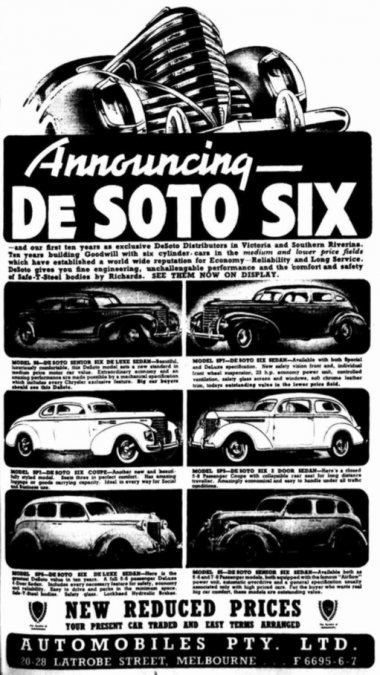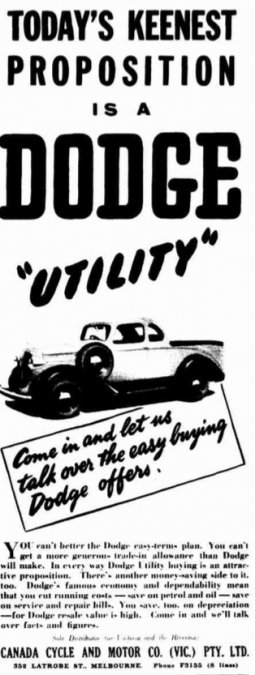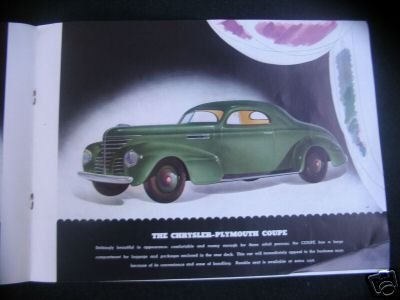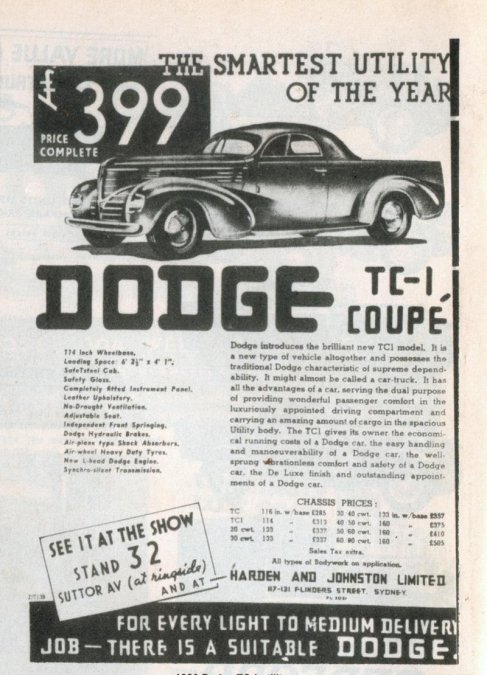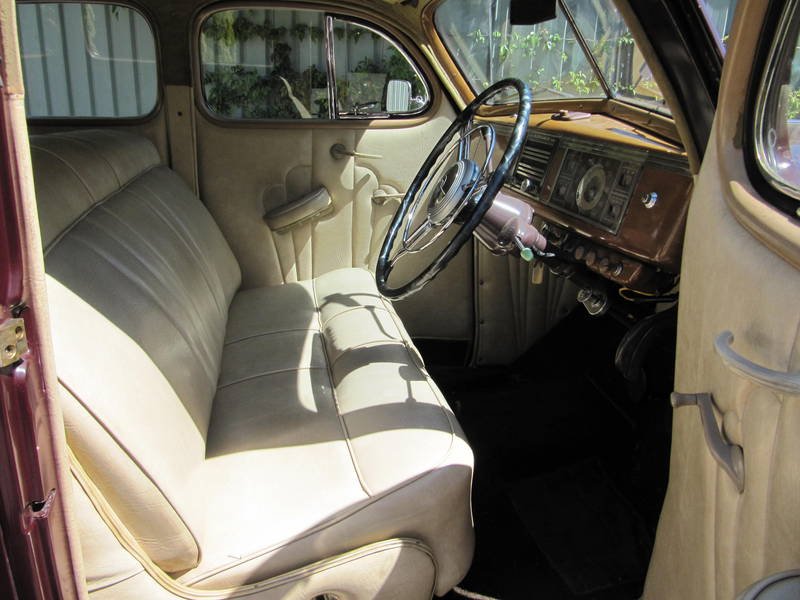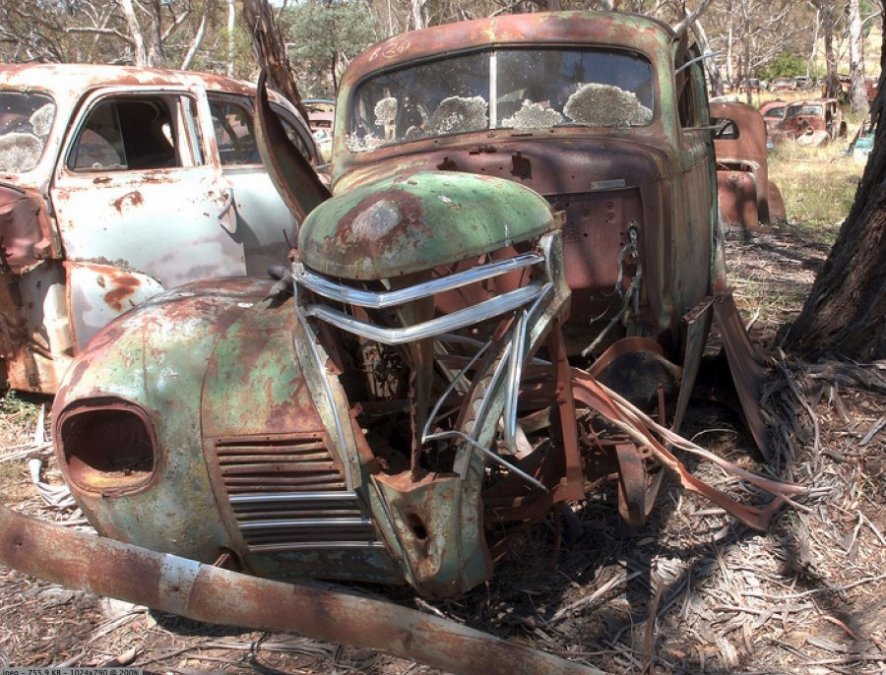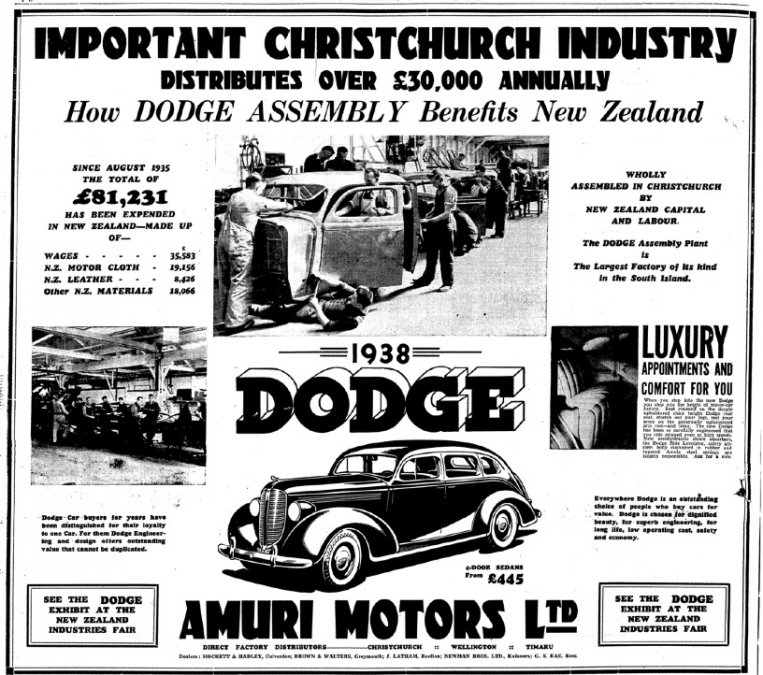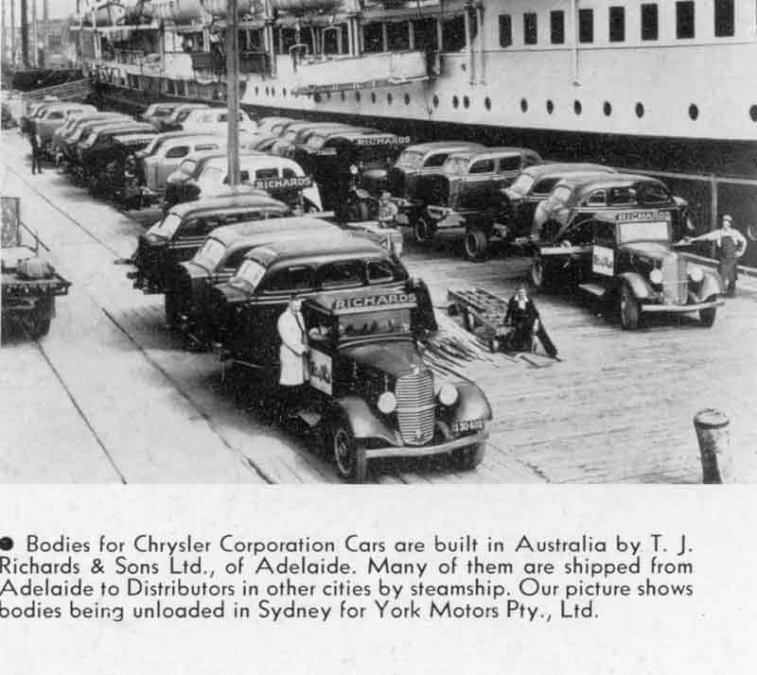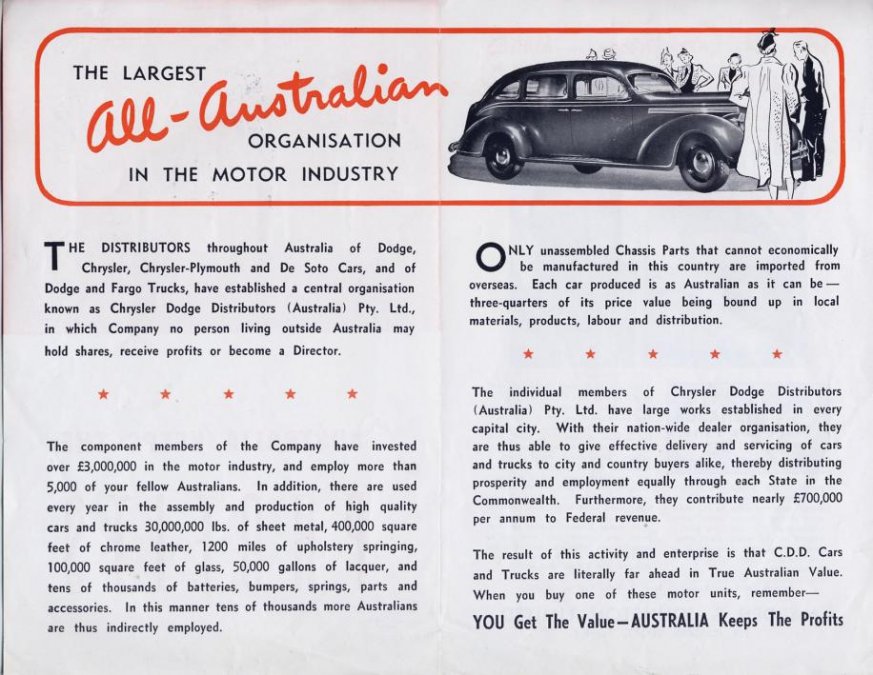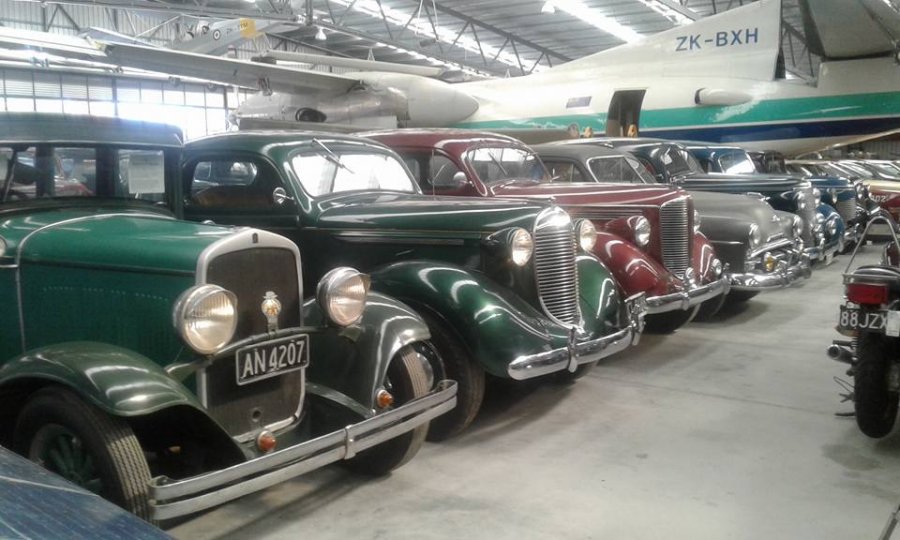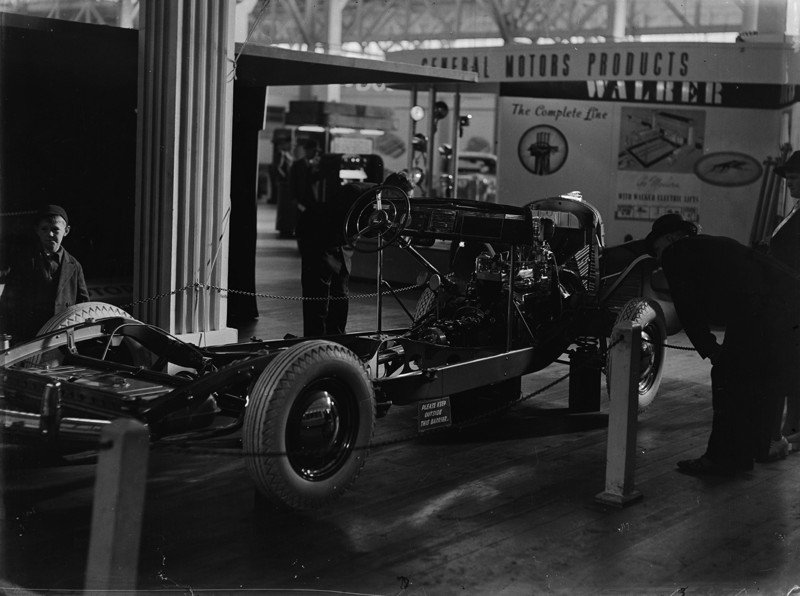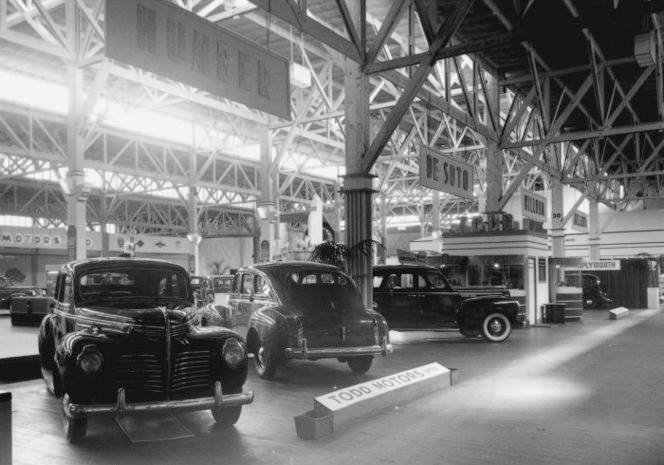-
Posts
57 -
Joined
-
Last visited
Content Type
Links Directory
Profiles
Articles
Forums
Downloads
Store
Gallery
Blogs
Events
Classifieds
Everything posted by eh dubya
-
Andy mine's a repro casting, I used the original ends and a plain one to make a pattern, it took two attempts to get it right.
-
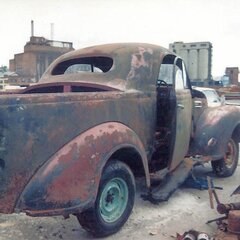
1939 Plymouth TJR Right Hand Drive Throttle Link
eh dubya replied to eh dubya's topic in P15-D24 Forum
Great stuff Pete, it's interesting that Terry's TJR '38 I posted has a short straight pedal rod and pivot in there between the floor and exit holes. Good to know it's not necessary. Those look like the Steele pedal pads I have, I was a bit disappointed with the colour being nothing like my brown accelerator pedal or shifter boot. -
Re 1940-39 vertical grille trim interchangeability I don't think it possible, they used an adapter for the '39 badge on the '40 and profile appears to differ. The hood ornaments are also very similar but different enough not to interchange.
-
Andy I think it's a Todd assembled Canadian car, I've yet to see any evidence of an Australian car badged as a Chrysler, only Chrysler-Plymouth with both badges. Another unique or rare at least Australian item is the windscreen division bar...
-

1939 Plymouth TJR Right Hand Drive Throttle Link
eh dubya replied to eh dubya's topic in P15-D24 Forum
Thanks Andy and Pete, I have a stock pedal centred in the floorboard hole when flat and 1997 Wrangler 4.0 cable to pull. It's the geometry of the of the pedal rod that's the problem. Petes '38 pic is very interesting, cleanly using the upper hole (unlike the TJR '38 I posted), I imagine there's a pivot connecting the pedal rod hidden behind the hole. it confirms a '38 setup would work but I'm reluctant to go that way yet without knowing what a '39 looked like. That's such a nice pic Pete, thank you very much for it and confirming the numbers/difference. -
Andy, there's lots more differences like the roof mounted (vacuum?) wipers, one piece die cast hood side vents, vertical grille trim and top two horizontals. Canadian cars also have a different front floor section with an intermediate angle like other '39 Mopars.
-

1939 Plymouth TJR Right Hand Drive Throttle Link
eh dubya replied to eh dubya's topic in P15-D24 Forum
Andy it's a 1939 TJR Plymouth RHD as per title. The top picture is it, the second pic is 1938 TJR. -
Hi all, searching for pics, p15-d24.com is clearly the best source but nowhere could I find a pic of any '39 pedal end of a throttle link. I'm puzzled just how it was done, I was kindly shown a picture of a '38 which uses a short straight pedal rod attaching to a bellcrank and firewall mounted cross shaft, with this setup the bell crank pokes back into the rectangular hole in the body mount. As far as I can establish from a multi year part list 39-41 LHD US cars were peculiar to themselves but 39 Plymouth book lists no less than six RHD pedal rod part #s. I'm told the local Canadian sourced cars simply have a pedal rod to a manifold mounted bell crank. I attempted to use a straight pedal rod and the redundant clutch pivot but that geometry causes the shaft to move fore and aft in the floor hole too much. The '39 has a round hole above the rectangular one right side only and it appears to have been filed for clearance suggesting it came through there, strange as there's no sign of a bell crank mount. Any clues would be much appreciated as I not even been able to find a picture of a LHD one.
-
I would say the opposite, I've encountered many body parts that are frustratingly close but different enough to be unusable. That said I have a 67 tailshaft and housing bolted to a 97 trans in my '39 Plymouth
-
Matt, chrome itself is very thin and wouldn't cause any issues, copper used to fill imperfections might. If it requires heavy copper plating it's best to get it back from the plater to surface and check fit yourself before returning it for final polish and chrome. My hinge is straight and has plenty of clearance and I can't imagine the plating process itself causing the problem. Yours may have been bent by some polishing mishap, it's always best to do as much prep as you can yourself in my experience.
-
You'd also reverse the Ackerman effect
-

Help me remove my driver door latch assembly
eh dubya replied to Mortimer452's topic in P15-D24 Forum
Yeah it sounds brutal, how about tack welding a bit of sheetmetal or something on the outer edge of the screw you can grab with vise grips and drill? I normally use a 1/8 pilot first. -
Andy, the official designation for the hump back sedans you mention is ‘touring sedan’ and the flat backs are just sedans, I think both were available in most if not all markets. I’m not surprised ’39 Plymouth front clips may have found their way onto ’38 bodies even new, I note Canada Cycle and Motor were advertising ’38 Dodge utes well into ’39 and after the ’39 Plymouth ute was on sale. AFIK the 3w turret was ’39 only, I’ve never seen an Australian ’39 Plymouth 5w coupe, or an SP7 like in the ad below.. I’ve seen a few pics of that ’39 roadster ‘ute’ and met a couple of other owners of those remains, I’m told the front clip ended up on a hot rod sedan which was pranged. It’s interesting to hear that door handle arrangment was so widely used, mine were siezed from the diecast socket corroding in it’s steel housing. I’ve done a fair bit of research into the origins of the ute and am convinced the Ford invention story is a myth, the earliest example I’ve found of a coupe ute is the ’27 Essex Dover. Queensland Ford dealers marketed a 1918 T as a ‘station utility’ with a very basic low swept side topless body. I’ve seen a 1908 Talbot with a similar body and a rag top, there’s no shortage of examples of roadster utes from the late teens on and the term was as loose then as it is today, also ‘proper’ swept side utes were described as 'open deliveries’ with ‘utility’ not becoming prevalent until the ‘30s. I’ve seen mention of York Motors Sydney selling a run of utes bodied there, given the huge number of coachbuilders in Australia at the time it’s not surprising there’s a lot of low production oddball stuff like the D12 last pic.
-
The brochure above shows a 5 window coupe which was never sold in Australia, presumably this one below is from a later brochure showing the TJR 3 window. I've never seen a D12 ute but this dealer's marketing appears unique.
-
You're most welcome Bill. A few more notes, individual Australian distributors seem to have put their own twist on the branding of different models. My TJR P7 ute had lost it's grille badges but the witness mark seemed to say Chrysler on the right, I've since come to believe some '39s were marketed as Chrysler Plymouths and seen several others badged this way. There were also P8s or deluxes marketed as Royals with fancy door trims, an interesting bit of local content is the plastic coated interior door handles and window winders, these were made by a Melbourne company which is said to have pioneered the process. They have a large spline on the rear which fits into a splined socket with a groove in it that accepts a spring clip captive in the handle, removal simply requires pushing a piece of wire through a hole to release the clip. This retention system later appeared on early Holdens. Below is a picture of a very sad Australian SP7, the only one I've ever seen. It has a tag on the cowl like my ute's Lynch Rd Detroit # affixed with drive rivets but on the opposite side and no TJR tags. A lot but not all Australian '39s have a stylish windscreen division bar which extends up over the rubber as if it's to cover a trim joint but I've never seen it with trim or on anything but Australian cars.
-
It appears New Zealand importers switched from 'Empire Built' to US when Canadian tariffs were raised in line with others late 1930 and didn't go back until 1939. Amuri Motors handled Dodge and Todd Motors the other Chrysler brands.
-
hi Bob, thanks for the insightful comments. Chrysler Dodge Distributors (Aus) Pty Ltd was formed around 1935 by distributors who seem to have had state wide rights to one or more Chrysler brand. Canada Cycle and Motor Trading (Vic) Pty Ltd distributing Dodge in the state of Victoria for intstance. Chrysler Dodge Distributors bought a controlling interest in TJ Richards in 1936, it appears some bodies were shipped to northern dealers where they were fitted to chassis.
-
It's common knowledge here that locally assembled prewar US cars were Canadian sourced, after the war it was a mix depending on the year.
-
Pretty much all prewar US cars assembled in NZ are of Canadian origin with mopars having plenty of Canadian diecast and Plymouths badged as Chrysler, Desoto or Dodge. Australia's mixed bag is interesting, my TJR P7 came from Lynch Rd Detroit as a cowl chassis. The Canada Cycle Trading Co seem to have had some sort of deal importing from Canada alongside Chrysler US sourced parts. A P7 display chassis presumably having outlived it's usefulness in Nth America promoting 1940 models at the NZ Centennial Exhibition...
-
Are you sure it's the chassis # and not it's part #? I think the usual Australian location is on the left below the cowl.
-
I'm sorry to see your misfortune Powerhouse. Bolting it to a substantial lump would be a good start. Some say veeing it with a grinder smears the grain and makes for inferior weld penetration, so you might need to use a burr or something to get to the crack root. Stitching cast iron seems to be the all the rage these days. -Andy
-
I found this pic which fills in the blanks for me, if someone could measure the length and width of the horizontal section I'd much appreciate it. I see I'm missing the trumpet stiffeners. -Andy
-
here's a couple... http://www.eastwood.com/ew-copper-weld-thru-primer-16-oz-aerosol.html www.vbsa.fr/en-item-107-copper-spray-anti-corrosive.htm I've not used either.
-
It's done all the time in high end restoration with both steel and aluminium and the process of choice is usually oxy-acetylene. Copper spray is what professionals use to protect the rear and lap joints because it doesn't burn off and self heals, it's been required by law here for crash repairs for years. -Andy
-
Thanks Roadkingcoupe, a better picture would be nice. This is what I have at the moment, the later model bracket with another right angle bracket bolted to it which fouls the hood stays. -Andy






